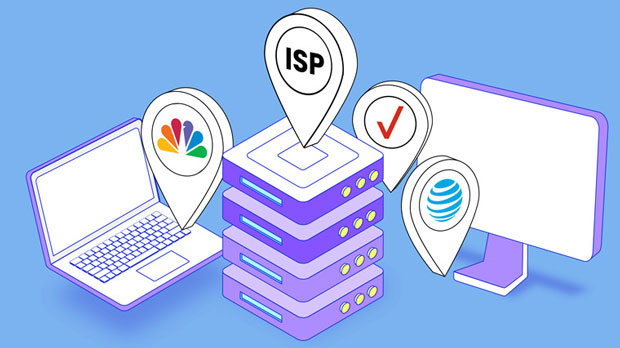In the world of online security and privacy, proxies play a crucial role. They act as intermediaries between users and the internet, providing users with a way to hide their IP addresses, access geo-restricted content, and ensure secure browsing. Traditional static proxies have long been popular, but the introduction of advanced solutions like unlimited proxy PYPROXY has raised the bar in terms of flexibility, performance, and security. This article compares Unlimited Proxy PyProxy to traditional static proxies, highlighting its distinct advantages and the value it brings to users. 1. Introduction to Traditional Static ProxiesTraditional static proxies are a staple in the world of internet privacy. These proxies assign users a single, fixed IP address that remains the same for the entire session or connection period. The primary advantage of static proxies lies in their simplicity: once set up, users can consistently rely on the same IP for accessing resources. However, this comes with inherent drawbacks that can limit their efficiency and reliability in modern internet use cases.2. Limitations of Traditional Static ProxiesDespite their simplicity, traditional static proxies face several challenges:a. Risk of Detection: Since static proxies always use the same IP address, they are easier to detect by websites or applications that track IP addresses. If a user repeatedly connects from the same static IP, it raises flags in security systems, making it easier for websites to block or restrict access.b. Lack of Anonymity: Static proxies are not ideal for maintaining privacy because they often leave identifiable footprints. Persistent use of the same IP makes it easier to trace user activity across different websites.c. Limited Scalability: Static proxies do not offer flexibility. Users who require a large number of IP addresses or need to rotate IPs frequently will quickly find static proxies inadequate. This limitation becomes particularly problematic in activities like web scraping, automated browsing, or high-frequency data collection, where IP rotation is essential.3. Introduction to Unlimited Proxy PyProxyUnlimited Proxy PyProxy, on the other hand, is a next-generation proxy solution that addresses many of the challenges posed by static proxies. By offering dynamic IP addresses that change frequently and providing higher levels of customization and performance, PyProxy delivers enhanced security and flexibility. Unlike traditional static proxies, PyProxy is designed to offer anonymity and scalability while providing faster, more reliable connections.4. Advantages of Unlimited Proxy PyProxya. Enhanced Anonymity and SecurityUnlimited Proxy PyProxy excels at providing users with greater anonymity. Since it rotates IP addresses at regular intervals or after each request, it is much harder to trace a user's activity. This makes it a superior choice for activities like browsing sensitive information, conducting market research, or performing web scraping without leaving traces. The dynamic nature of PyProxy means that even if one IP address gets flagged or blocked, the next IP in the rotation will continue to allow uninterrupted access.b. Better Performance and SpeedPyProxy solutions typically come with optimized server networks that allow for faster connections. Unlike static proxies, which can sometimes experience slowdowns due to congestion or overload on a single IP, PyProxy offers load balancing by distributing traffic across multiple IPs. This results in smoother and faster browsing, especially for high-volume tasks like data mining or real-time access to large databases.c. Increased ScalabilityA major advantage of Unlimited Proxy PyProxy over traditional static proxies is its scalability. PyProxy can manage large pools of IP addresses that rotate automatically, allowing users to scale their proxy use without worrying about running into IP limits or restrictions. This is particularly useful for businesses or individuals involved in web scraping, market research, or any activity requiring frequent access to different websites without getting blocked.d. Flexibility in Use CasesPyProxy provides more flexibility in how proxies are utilized. It is not just limited to browsing; it is suitable for a range of tasks such as SEO tools, competitive research, ad verification, or even circumventing geo-blocks. Its dynamic IP rotation ensures that users can maintain multiple sessions across different services without risking detection. This level of flexibility makes it a versatile tool for any internet-based operation.5. How Unlimited Proxy PyProxy Enhances Business OperationsBusinesses that rely on data collection, market analysis, or customer insights need proxies that can handle large volumes of data while maintaining speed and accuracy. Traditional static proxies can be limiting in such cases, especially when there’s a need for IP rotation. Unlimited Proxy PyProxy solves this problem by offering large pools of rotating IP addresses, which allows businesses to access multiple data sources simultaneously without worrying about IP blocks or slowdowns.a. Web Scraping EfficiencyUnlimited Proxy PyProxy is a game-changer for web scraping operations. With its automatic IP rotation and scalability, businesses can scrape vast amounts of data from multiple websites without the risk of detection. Traditional static proxies cannot match this level of efficiency, as they are prone to being blocked after repetitive use of the same IP address.b. Secure Online TransactionsFor industries like finance, online retail, or healthcare, security is of utmost importance. PyProxy’s dynamic IP addresses, combined with its enhanced encryption protocols, ensure that sensitive transactions remain secure and anonymous. Static proxies, on the other hand, expose businesses to the risk of data breaches and targeted cyberattacks due to their predictable and fixed IP addresses.6. The Bottom Line: Why Choose Unlimited Proxy PyProxy?Unlimited Proxy PyProxy offers a distinct edge over traditional static proxies. Its advanced features, such as dynamic IP rotation, enhanced security, and greater flexibility, make it a superior choice for users and businesses alike. Whether it’s for personal use or large-scale business operations, PyProxy delivers the speed, scalability, and anonymity that traditional static proxies simply cannot match.By opting for PyProxy, users gain access to a reliable, high-performance solution that meets the demands of today’s fast-paced internet environment. Whether for secure browsing, data scraping, or online transactions, Unlimited Proxy PyProxy is designed to provide the best possible experience while safeguarding user privacy and operational efficiency.In conclusion, the advantages of Unlimited Proxy PyProxy over traditional static proxies are clear. With its dynamic IP rotation, enhanced performance, and greater scalability, PyProxy outperforms static proxies in virtually every category. For anyone seeking a more secure, flexible, and reliable proxy solution, PyProxy presents a valuable option. It offers not just technical superiority, but also a deeper understanding of the growing need for anonymity, security, and efficiency in modern online activities.
Oct 26, 2025



































































